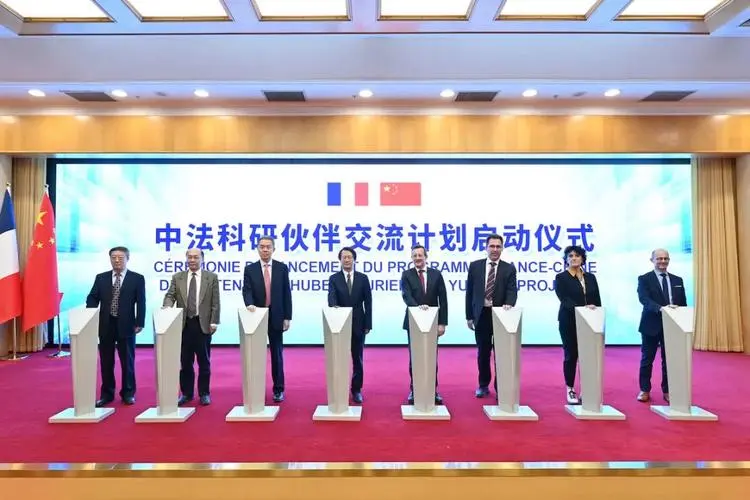On June 8, 2023, Philippe Baptiste, President of the Centre National d’Études Spatiales (CNES), and Zhang Kejian, Director General of the China National Space Administration (CNSA), signed a Memorandum of Understanding at their headquarters in Paris for the carrying of the Detection of Outgassing RadoN (DORN) on the Chang’e 6 lunar sample return mission.
The meeting was also an opportunity to exchange views on the Space Variable Objects Monitor (SVOM) project and the excellent cooperation between France and China in the framework of the Sino-French Oceanographic Satellite. The Structural-Thermal Model (STM) component of the DORN arrived in Beijing on May 4 and has now been integrated into the Chang’e 6 lander. Its flight module will be delivered to China in July 2023.
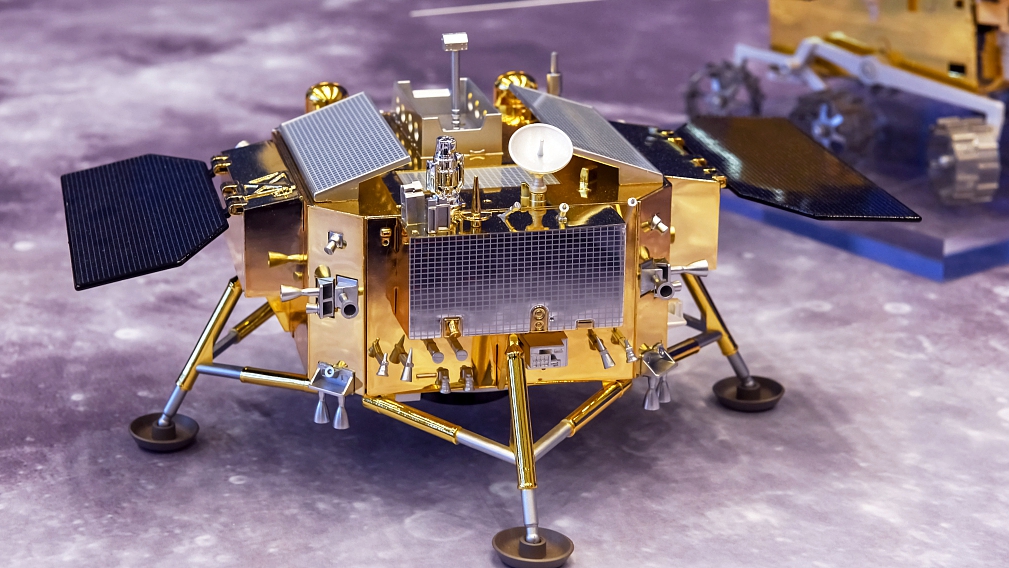
The SVOM project will start in 2024 to detect gamma-ray bursts in the universe to infer the explosion of massive stars or the fusion of neutron stars or black holes. The SVOM satellite will carry four pieces of equipment: a multi-channel (narrow-field) X-ray telescope (MXT) and a trigger camera for wild-filed X and gamma-ray telescope (ECLAIRs) from France, a gamma-ray burst monitor (GRM), and a narrow-field visible telescope (VT) from China. Among them, the MXT and ECLAIRs arrived in Shanghai in March 2023 after completing their final tests. As of today, the payload module is fully assembled, bringing together French and Chinese instruments, and has successfully performed preliminary electrical tests.
On the occasion of the French President’s state visit to China in April this year, article 22 of the latest joint statement issued by France and China refers to the cooperation between the two countries in the field of space that both sides are satisfied with the cooperation between their space agencies around Chang’e-6 and the joint research on extraterrestrial samples. In addition, China presented France with 1.5 grams of lunar soil samples brought back from the Chang’e 5 mission.
The Chang’e 6 probe was developed by the Fifth Academy of China Aerospace Science and Technology Corporation (CASC). As early as 2019, China and France had signed a letter of intent for the lunar exploration program, in which French scientific research equipment would ride on China’s Chang’e 6 lunar probe to explore the moon with China.
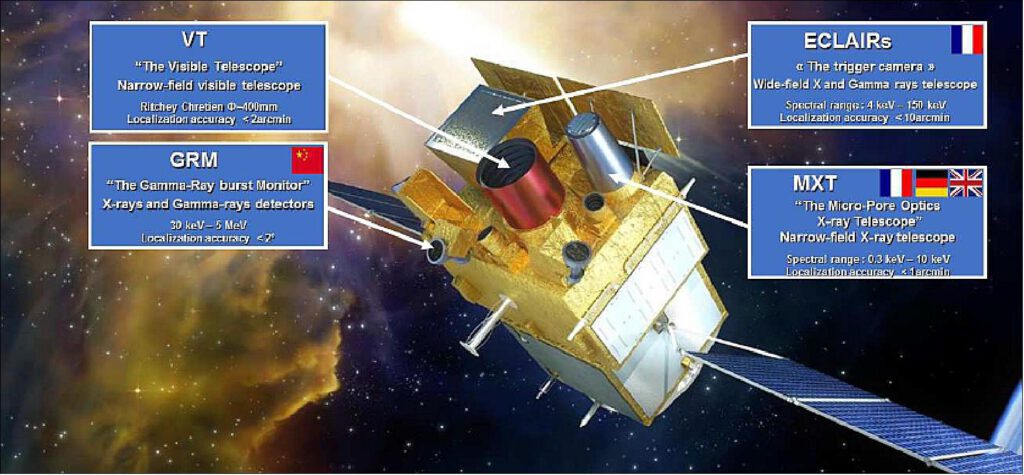
In 2019, Jean-Yves Le Gal, president of the French National Space Agency (CNES), had said on social media platforms that the French side was ready to carry about 15 kg of equipments on Chang’e 6, including a camera and an analyzer, to facilitate research on the study of the Moon.
Chang’e-6 is scheduled to be launched in May 2024, just as France and China celebrate the 60th anniversary of diplomatic relations. The Chang’e-6 mission will land on the back of the Moon and is expected to bring back a two-kilogram sample of lunar soil.
The Chang’e-6 mission is expected to achieve the first sample return of a human spacecraft from the back of the Moon and is proposed to be implemented around 2025. The Chang’e-6 mission was chosen to land on the back of the Moon, allowing for the discovery and collection of lunar samples of different ages from different regions. The engineering goal of Chang’e-6 is to break through the lunar retrograde orbit design and control technology, lunar back intelligent sampling technology and lunar back takeoff and ascent technology to achieve automatic lunar back sampling return, while carrying out effective international cooperation.
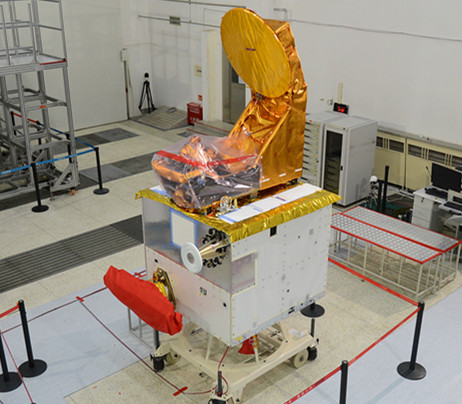
As the first Western country to establish diplomatic relations with China since the founding of the People’s Republic of China (PRC), France has been actively cooperating with China for decades, especially in the field of space technology.
Since the signing of the cooperation agreement between the two governments in 1997, a series of initiatives in the fields of satellite engineering, human spaceflight, deep space exploration and Earth observation have been carried out in an orderly manner, and have achieved remarkable results for the world.
Back in 2005, China and France signed an agreement to promote cooperation in the field of astronomical and oceanographic satellites, and the Sino-French Ocean Satellite Project Team was officially established. In the 13 years of cooperation and research since then, the Chinese side is responsible for the launch, measurement and control, providing launch vehicles and satellite platforms, and developing new microwave scatterometers; the French side is responsible for the development of ocean wave spectrometers.
In terms of Earth observation, CNES and China National Space Administration (CNSA) congratulated the scientific achievements of the Sino-French Ocean Satellite Project launched in 2018. The exchange also highlighted China’s participation in the Space Climate Observatory (SCO) cooperation through two projects to map the Yangtze River wetlands and monitor CO2 fluxes.
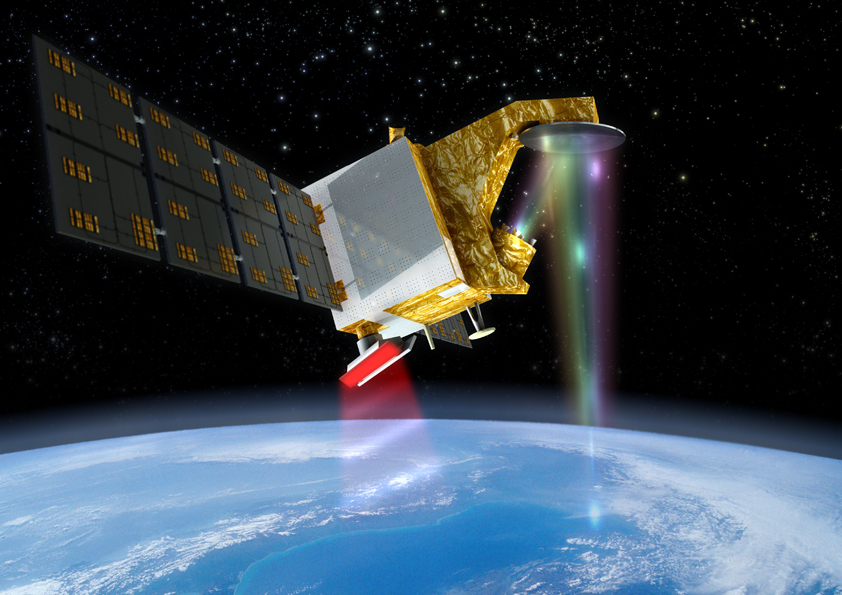
On October 29, 2018, the Long March-2C launch vehicle carried the China-France Oceanography Satellite (CFOSAT), which took off from China’s Jiuquan Satellite Launch Center and headed for space 520 km away. Based on China’s mature CAST2000 satellite platform, CFOSAT carries a French wave spectrometer and a scatterometer developed by China, which are used for wave research and ocean monitoring respectively.
This is the first satellite developed in cooperation between the governments of France and China, marking an important step in space cooperation between the two countries.
As the first satellite to synchronously observe the global wave direction spectrum and sea surface wind field, CFOSAT has provided a large amount of sea wind and wave observation data since it was put into operation, playing an important role in oceanography, meteorological forecasting, climatology and other research fields, and providing a new observation perspective to address global climate change.
Since its launch, CFOSAT has distributed data to several users, and dozens of scientific teams in several countries and regions around the world have used the satellite’s shared data to serve scientific research and optimize weather forecasting systems. These data have been applied in typhoon disaster monitoring, North and South Pole sea ice monitoring, marine numerical weather forecasting and short-term forecasting demonstration verification, the effect is good. The CFOSAT has a design life of 3 years, and has entered into extended life operation from 2021. Through the joint efforts of both parties, it will continue to contribute to revealing the changes of ocean dynamics and environment.
„The CFOSAT has created many firsts, it is the first large-scale joint space mission between CNES and the CNSA, and a landmark project of cooperation between the two countries. This project clearly demonstrates that international cooperation can be of great benefit when planning and execution are in place and take advantage of the complementary expertise of both parties.“ Philippe Baptiste, President of CNES, said at a conference to mark the 4th anniversary of the CFOSAT’s operation in orbit.
(Source: China National Space Administration, China Academy of Space Technology, AIAA, CNES, CGTN)



